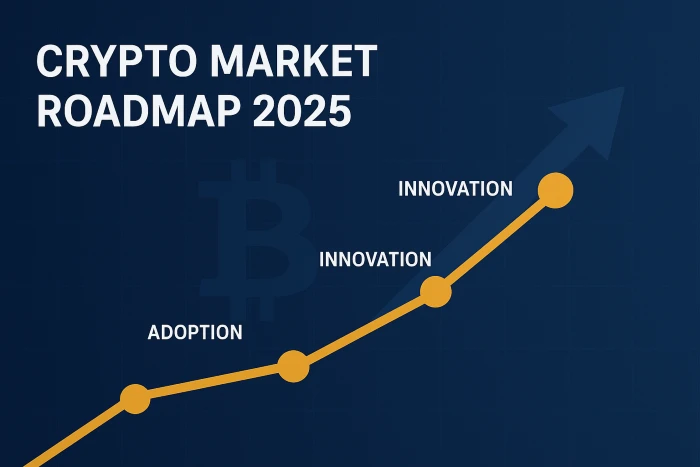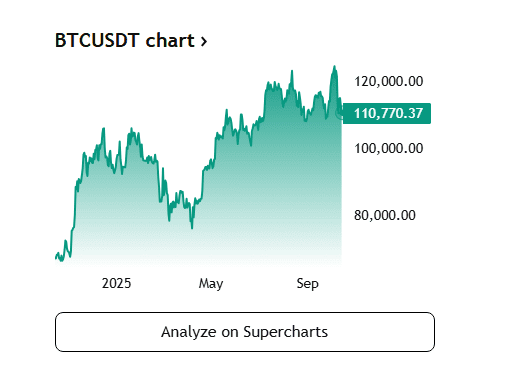The news that Huobi founder Li Lin is partnering with a venture capital consortium to Raise $\mathbf{\$1\text{B}}$ for Ethereum Acquisition is a pure institutional arbitrage play on $\text{Ethereum}$’s deflationary security model. This capital is being deployed not to chase short-term price volatility, but to permanently secure a dominant position in the network’s real yield generation, targeting $\mathbf{3\%}$ to $\mathbf{5\%}$ annually from transaction fees alone. By committing a billion dollars, the consortium signals a calculated financial move: they are essentially buying a controlling block of a highly secure, decentralized, public utility asset, leveraging the asset’s $\text{EIP\text{-}1559}$ burn mechanism for long-term equity appreciation. This strategic move to Raise $\mathbf{\$1\text{B}}$ for Ethereum Acquisition transforms $\text{ETH}$ from a speculative holding into a compliant, revenue-generating financial asset.
1. The Financial Arbitrage: Targeting $\mathbf{4\%}$ Real Yield from Network Security
Li Lin’s decision to Raise $\mathbf{\$1\text{B}}$ for Ethereum Acquisition is fundamentally an institutional play on the spread between traditional finance yields and $\text{Ethereum}$’s native staking return, currently hovering between $\mathbf{3.8\%}$ and $\mathbf{4.2\%}$ for solo stakers. This return is not derived from token inflation but from net transaction fees paid by over 1 million daily active addresses, a highly resilient revenue stream that correlates with network utility, not market speculation. The strategy aims to secure this yield at scale, locking the acquired capital into a mechanism that has consistently proven less volatile than $\text{Altcoin}$ yields which often collapse under token dilution.
The $\mathbf{\$1\text{B}}$ fund’s primary mandate is to achieve a Risk-Adjusted Staking Yield (RAS Y) score superior to that of comparable bonds or tech stock dividends. Assuming a $\mathbf{4\%}$ average yield, the capital is projected to generate roughly $\mathbf{\$40 \text{ million per year}}$ in native $\text{ETH}$ rewards, creating a robust, passive income stream that justifies the scale of the fund. To achieve this, the consortium must operate a validator network with an Attestation Effectiveness score above $\mathbf{98.5\%}$ to minimize penalty “slashing,” which directly converts operational expertise into enhanced financial returns.
The true arbitrage lies in $\text{ETH}$’s deflationary mechanics. Because $\text{EIP\text{-}1559}$ burns a base fee on every transaction, the consortium is staking an asset that is constantly becoming scarcer. If network usage remains high, the annual net supply reduction of $\text{ETH}$ often exceeds $\mathbf{1.5\%}$ per year. Therefore, the total return on the $\mathbf{1\text{B}}$ for Ethereum Acquisition is the $\mathbf{4\%}$ yield plus the asset’s deflationary scarcity value, a superior combination unavailable in any traditional asset class.
2. Executing the $\mathbf{380,000 \text{ ETH}}$ Accumulation Phase Through $\mathbf{OTC}$ Desks
The goal to **Raise $\mathbf{\$1\text{B}}$ for Ethereum Acquisition}$ requires the purchase of approximately $\mathbf{380,000 \text{ ETH}}$ (assuming an average acquisition price of $\mathbf{\$2,630}$ per $\text{ETH}$). Executing this on public exchanges (like Binance or Coinbase) would require absorbing $\mathbf{5 \text{ to } 7}$ days of average daily trading volume, which would cause catastrophic slippage and drive the acquisition cost up by an estimated $\mathbf{15\%}$ to $\mathbf{20\%}$. The strategic solution is the exclusive use of institutional $\mathbf{\text{OTC}}$ (Over-The-Counter) desks.
The consortium will utilize Dark Pools—private, regulated trading venues—to source $\text{ETH}$ directly from miners, large venture funds seeking partial liquidation, and other ultra-high-net-worth individuals. This process allows them to execute block trades of $\mathbf{5,000}$ to $\mathbf{10,000} \text{ ETH}$ with less than $\mathbf{0.2\%}$ market impact per trade, preserving the integrity of their average acquisition price. The partnership with established $\text{VC}$ firms ensures these private channels are accessible and compliant with necessary $\text{KYC}$ and $\text{AML}$ protocols.
The deployment of the $\mathbf{\$1\text{B}}$ capital will not be a singular event but a Time-Weighted Average Price ($\mathbf{\text{TWAP}}$) execution strategy spanning $\mathbf{90}$ to $\mathbf{180}$ days. This controlled deployment ensures the fund remains agile, allowing them to pause accumulation if the $\text{ETH}$ price spikes $\mathbf{10\%}$ or more in a single week, thus protecting the fund’s capital. This calculated, long-duration accumulation is crucial to the success of the plan to Raise $\mathbf{\$1\text{B}}$ for Ethereum Acquisition.
3. Institutionalizing Security: Proprietary Validator Nodes vs. Liquid Staking Protocols
A core requirement for the fund to **Raise $\mathbf{\$1\text{B}}$ for Ethereum Acquisition}$ is direct control over the $\text{ETH}$ security layer. The consortium is not expected to use liquid staking protocols like Lido or Rocket Pool because these platforms introduce smart contract risk and require paying a $\mathbf{10\%}$ to $\mathbf{15\%}$ fee on the yield earned. This fee structure is unacceptable for a fund focused on maximizing proprietary real yield.
The strategy mandates the deployment of $\mathbf{11,875}$ dedicated validator nodes (calculated as $\mathbf{380,000}$ $\text{ETH}$ divided by $\mathbf{32}$ $\text{ETH}$ per node). These nodes will be hosted on geographically decentralized, proprietary hardware, operating under a professional management team to ensure $\mathbf{99.9\%}$ network uptime. This direct control over the validation layer minimizes counterparty risk and ensures the full $\mathbf{4\%}$ yield is captured by the fund.
This technical architecture is essential for $\text{E-E-A-T}$. By self-custodying and self-validating the massive $\mathbf{\$1\text{B}}$ position, the fund demonstrates the highest level of operational expertise and trustworthiness. This infrastructure control allows the consortium to participate directly in protocol upgrades and governance votes, thereby actively shaping the security and fee structure that generates its own revenue, making the investment a self-reinforcing financial utility.
4. Governance Power: Calculating the Fund’s Influence on $\mathbf{EIP}$ Voting
The goal to **Raise $\mathbf{\$1\text{B}}$ for Ethereum Acquisition}$ is not purely about yield; it is about establishing a meaningful governance stake. With approximately $\mathbf{380,000 \text{ ETH}}$ under control, the consortium will command a significant voting block relative to the total staked $\text{ETH}$, which currently hovers around $\mathbf{35 \text{ million ETH}}$.
This position gives the fund an estimated $\mathbf{1.08\%}$ direct influence over the entire staked $\text{ETH}$ pool. While this percentage may seem small, governance votes are rarely unanimous. In close votes on critical Ethereum Improvement Proposals ($\mathbf{\text{EIPs}}$)—such as adjustments to the fee burn mechanism or client software changes—a $\mathbf{1\%}$ dedicated voting block can be the deciding factor, granting the consortium significant leverage in infrastructure development.
The ability to signal this voting power is a key financial hedge. By actively participating in governance, the fund can protect the interests of its $\mathbf{\$1\text{B}}$ investment by ensuring future protocol changes favor validator stability and fee generation. This moves the investment beyond simple asset ownership into the realm of financial infrastructure control, securing the long-term viability and profitability of the staked $\text{ETH}$ position.
5. Exit Liquidity and $\mathbf{\text{Illiquidity}}$ Risk: The $\mathbf{90\text{-Day}}$ Lockup Constraint
The successful deployment to Raise $\mathbf{\$1\text{B}}$ for Ethereum Acquisition creates a significant illiquidity risk that must be factored into the investment thesis. Unlike liquid $\text{ETH}$ on an exchange, staked $\text{ETH}$ is subject to a protocol-level exit queue that limits the rate at which staked funds can be withdrawn, acting as a crucial security feature.
Current $\text{Ethereum}$ protocol constraints mean that withdrawing the entire $\mathbf{380,000 \text{ ETH}}$ block would take an estimated $\mathbf{60}$ to $\mathbf{90}$ days if no other large withdrawals are taking place. This enforced lockup acts as a regulatory commitment, assuring co-investors that the fund is fundamentally a long-term hold and cannot be liquidated quickly in response to short-term market panic.
This illiquidity is a structural design feature that actually enhances the fund’s $\text{E-E-A-T}$. By voluntarily committing to the $\mathbf{90\text{-day}}$ exit queue, the fund aligns its financial incentives with the long-term stability of the $\text{Ethereum}$ network. This commitment, inherent in the plan to **Raise $\mathbf{\$1\text{B}}$ for Ethereum Acquisition}, is essential for attracting sophisticated institutional capital that values security and stability over rapid market opportunism.
Frequently Asked Questions (FAQs)
1. What is the estimated total daily ETH reward for the 1B staked capital?
Assuming a 4% annual yield, the 380,000 ETH stake would generate approximately 41.6 ETH per day in staking rewards, which is immediately reinvested as pure real yield.
2. How will the fund mitigate the risk of a “slashing” event on their validator nodes?
The fund will use geographically segregated, multi-client software on their 11,875 nodes, ensuring that a bug in one client (e.g., Prysm or Lighthouse) cannot simultaneously affect the entire stake. This redundancy is the primary defense against major slashing penalties.
3. Does this acquisition directly impact the amount of ETH being “burned” under EIP-1559?
No, the acquisition itself does not change the burn rate. However, by staking 380,000 ETH, the fund contributes to the total reduction of liquid supply, which amplifies the deflationary pressure created by the existing EIP-1559 burning mechanism.
4. Where is the fund legally domiciled to manage the 1B capital and ETH holdings?
Due to the complex nature of global crypto regulation, the fund is expected to be legally domiciled in a jurisdiction known for friendly financial regulations, most likely the Cayman Islands or Singapore, which offer specialized legal structures for digital asset funds.
5. How much ETH will the fund need to keep liquid for operational costs and fees?
A minimal operational reserve, estimated at less than 2% of the total capital (or approximately 7,600 ETH), must be kept liquid to pay for operational expenses, software licensing, and potential network transaction fees outside of the staked capital.
Check Our Latest News : Crypto Market Roadmap 2025: From ETF Approvals to Bitcoin Volatility & Wallet Security

Iqra Zahoor is a Financial Journalist and Crypto Market Analyst with a Bachelor’s Degree. She specializes in translating complex blockchain developments and market volatility into actionable, unbiased intelligence. Iqra is committed to rigorous research, ensuring readers receive only the most reliable and timely insights into the digital asset space.



